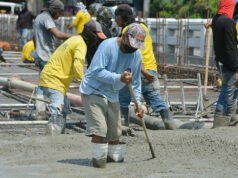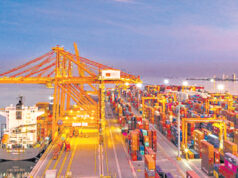New mineral reporting code seen implemented this year

FULL IMPLEMENTATION of the changes to the 2007 Philippine Mineral Reporting Code (PMRC) to comply with international reporting standards is expected within the year, according to the Philippine Stock Exchange, Inc. (PSE).
PSE Chief Operating Officer Roel A. Refran said at a virtual briefing Thursday that the proposed 2020 version of the PMRC could be implemented by that timeframe.
“The full implementation, hopefully, will take effect within the year, including the provision for the transitory period which is two years from approval by the Securities and Exchange Commission (SEC),” Mr. Refran said.
“We are already in discussions with the SEC on the finalized version. We are just going to finalize a couple of regulatory issues as they pertain to PSE,” he added.
The PMRC Committee initiated the review of the current reporting code in February 2019 to make it more internationally compliant.
Ciceron A. Angeles, Jr., the PMRC Committee chair, said at the briefing that the 2007 PMRC sets out the minimum standards, recommendations, and guidelines for the public reporting of exploration results, mineral resources, and ore reserves.
Mr. Angeles added that the 2007 PMRC is applicable to all solid mineral raw materials such as coal, gold, nickel, and chromite, but does not include liquid or gaseous materials such as oil.
“It is required for all listed mining and mineral exploration companies in the PSE or when applying for listing with the PSE,” Mr. Angeles said.
However, Mr. Angeles said there is a need to revise the 2007 PMRC to bring it in line with major global mineral reporting codes such as 2019 Committee for Mineral Reserves International Reporting Standards.
Some of the changes include in the proposed 2020 PMRC include changing the term “competent person” to “accredited competent person;” changing reporting terminology from ore reserve to mineral reserve; introduction of technical studies such as the scoping, pre-feasibility, and feasibility studies; and the addition of other non-technical aspects of reporting like commodity pricing, among others.
The PSE also proposed changes to the 2007 PMRC such as mitigation and remediation plans to solve environmental, social, and health and safety impacts; and the inclusion of a consent form to indicate the accredited competent person agrees to the public disclosure of the report.
Dennis A. Quintero, Philippines Australia Business Council chairman, noted that the mining industry currently accounts 6.3% or $4.38 billion of Philippine exports, while its share of gross domestic product is 0.6% or P124.5 billion.
Chamber of Mines of the Philippines Chairman Gerard H. Brimo said the revision to the PMRC is timely after the signing of Executive Order (EO) No. 130 on April 14, which lifted the nine-year moratorium on new mining projects.
However, Mr. Brimo said the return of foreign investors will take time despite the lifting of the moratorium, adding that the ban on open-pit mining should be lifted.
He cited a report released by a Canadian think-tank, Fraser Institute, which showed that the Philippines was unranked in its 2019 and 2020 surveys for attractive and stable mining jurisdictions.
“The ban on open-pit mining, a standard mining method practiced all over the mining world, needs to be lifted, as without this, the lifting of the moratorium on new mining projects alone will not allow the industry to achieve its full potential,” Mr. Brimo said.
“We want to be able to attract quality investors with substantial resources and expertise. We can only achieve that if the fiscal regime for mining is competitive, keeping in mind that we are competing with other mineralized countries for investment in this sector,” he added.
The ban on open-pit mining method was implemented by the late former Environment Secretary Regina Paz L. Lopez in 2017 due to its adverse impact on the environment.
Meanwhile, Mines and Geosciences Bureau (MGB) Director Wilfredo G. Moncano said the draft implementing rules and regulations (IRR) of EO 130 is making progress, adding that he was able to recently discuss the draft with Environment Secretary Roy A. Cimatu.
“Mr. Cimatu said the IRR should be issued soon and he is ready to sign it. We shall soon be inviting stakeholders as part of due process to hear their comments, suggestions, and inputs to this draft IRR. It may (happen) next week or the following week,” Mr. Moncano said.
“The MGB will strive to have this IRR forwarded to the Office of the Secretary for his signature as soon as possible. This IRR will come in the form of a department administrative order,” he added.
Asked to identify companies or projects affected by the lifting of the moratorium, Mr. Moncano said the MGB is still weighing whether to release the list.
“We need to balance the interests of the mining companies. There were opinions that if we publicized these names to the media, they might be targets of anti-mining protests,” Mr. Moncano said.
“We are seriously looking at providing these names to the media and to the public but we are also looking at the possibility that these mining projects will be opposed by these anti-mining groups,” he added.
In 2020, the MGB estimated the value of metallic mining output to have risen 1.13% to P132.21 billion, of which nickel ore and its by-products accounted for 51.8% or P68.48 billion; gold 36% or P47.60 billion; copper 11.25% or P14.88 billion; and silver, chromite, and iron P1.26 billion. — Revin Mikhael D. Ochave



